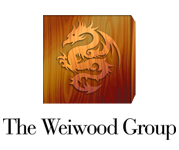Many organizations still cling to a familiar motivational playbook: set high-stakes targets, attach cash rewards, and crank up the competition. But in a solution-based economy, those old-school methods are more likely to stifle innovation than spark it.
The data is in. The stress induced by competitive incentives shuts down the creative parts of the brain, replacing ingenuity with survival instincts. And for modern organizations whose success depends on creative problem-solving, that’s a dangerous trade-off.
As Dan Pink put it:
“We don’t need sweeter carrots and sharper sticks. We need a whole new approach, an approach that puts more stock in intrinsic motivation. What worked successfully in the twentieth century is precisely the wrong way to motivate people for today’s challenges.”
Let’s explore what that new approach looks like, and why it’s the only one that truly aligns with human nature.

Creativity, Candles, and the Wrong Kind of Pressure
In the 1960s, psychologist Sam Glucksberg ran an experiment using a box of matches, a candle, and a handful of tacks. Participants were told to attach the candle to a wall so the wax didn’t drip on the floor. To spice things up, he added monetary incentives for those who solved it quickly.
Most participants failed.
They tried melting the candle to the wall, an effort doomed to gravity. Eventually, some realized they could tack the box to the wall and place the candle inside it. Clever. Creative. Outside-the-box, literally.
But here’s the twist: the group without any monetary incentives solved it faster!
AMP: The New Management Toolkit
At The Weiwood Group, we refer to the three motivating dimensions defined by Deci, Ryan, and Dan Pink as AMP:
- Autonomy
- Mastery
- Purpose
These are the three forces that fuel real, lasting engagement. Once base compensation is in place, AMP becomes the key to sustaining performance, creativity, and job satisfaction.
Autonomy
People need room to make meaningful decisions. Autonomy isn’t just freedom, it’s earned trust expressed in operational flexibility. Yet many managers still struggle to grant autonomy, especially when they haven’t identified it as a core developmental goal.
As Pink says:
“The secret to high performance and satisfaction is to foster the deeply human need to direct our own lives.”
Mastery
Contrary to the fear that skill-building leads to employee exits, mastery actually increases retention. People stay where they grow.
But here’s the catch: mastery only emerges when people are operating from a place of caring engagement, not survival. In stressed-out teams, decisions skew toward speed over quality, policy over judgment. Innovation gives way to compliance.
Purpose
Purpose anchors autonomy and mastery. It’s the reason we do what we do, and it must go deeper than vague mission statements. When a team understands the guiding principles of the organization, they can make confident, aligned decisions on their own. That’s how a culture of ownership is born.
“The right purpose and guiding principles lead to the right strategies. If tactics and strategy are properly aligned, one should recognize the purpose in each.”
-Steve Clarfield, PhD.
The Goldilocks Principle of Leadership
Effective management is not about being hands-off or heavy-handed, it’s about finding the Goldilocks Zone. Just enough guidance to support growth; not so much that it becomes interference.
At Weiwood, we teach managers to operate to the LIMIT, the Least Invasive Management Intervention Tool. It’s an elegant way of describing something very human: respond just enough to help, but not so much that you steal the challenge.
Support autonomy, but don’t confuse it with abandonment. Build mastery, but don’t make training so burdensome that it adds to their stress. Clarify purpose, but don’t turn vision into a philosophical straitjacket.
This is what modern management is: crafting challenge sets that are worthy of your people.
We’re not just distributing tasks anymore. We’re tuning conditions. We’re optimizing experience. We’re adjusting the quality of problems our teams spend their time solving.
Managers must ask:
- Does this team member have enough autonomy to make meaningful decisions?
- Are they being supported toward mastery, or left to sink or swim?
- Do they clearly understand the purpose behind the work they do each day?
If not, the challenge set isn’t aligned. And when it’s not aligned, creativity suffers. Performance flatlines. Engagement drops.
As Edward L. Deci reminds us:
“Instead of asking, ‘How can I motivate people?’ we should be asking, ‘How can I create the conditions within which people will motivate themselves?’”
Managing for Human Nature
So here’s the takeaway: good management aligns with human nature.
If your organization depends on creative solutions, and whose doesn’t these days, you can no longer afford to lead with blunt incentives and review cycles alone.
Bonuses may still have a role to play. But they’re not the answer.
The answer is AMP.
The answer is thoughtful, just-right interventions.

